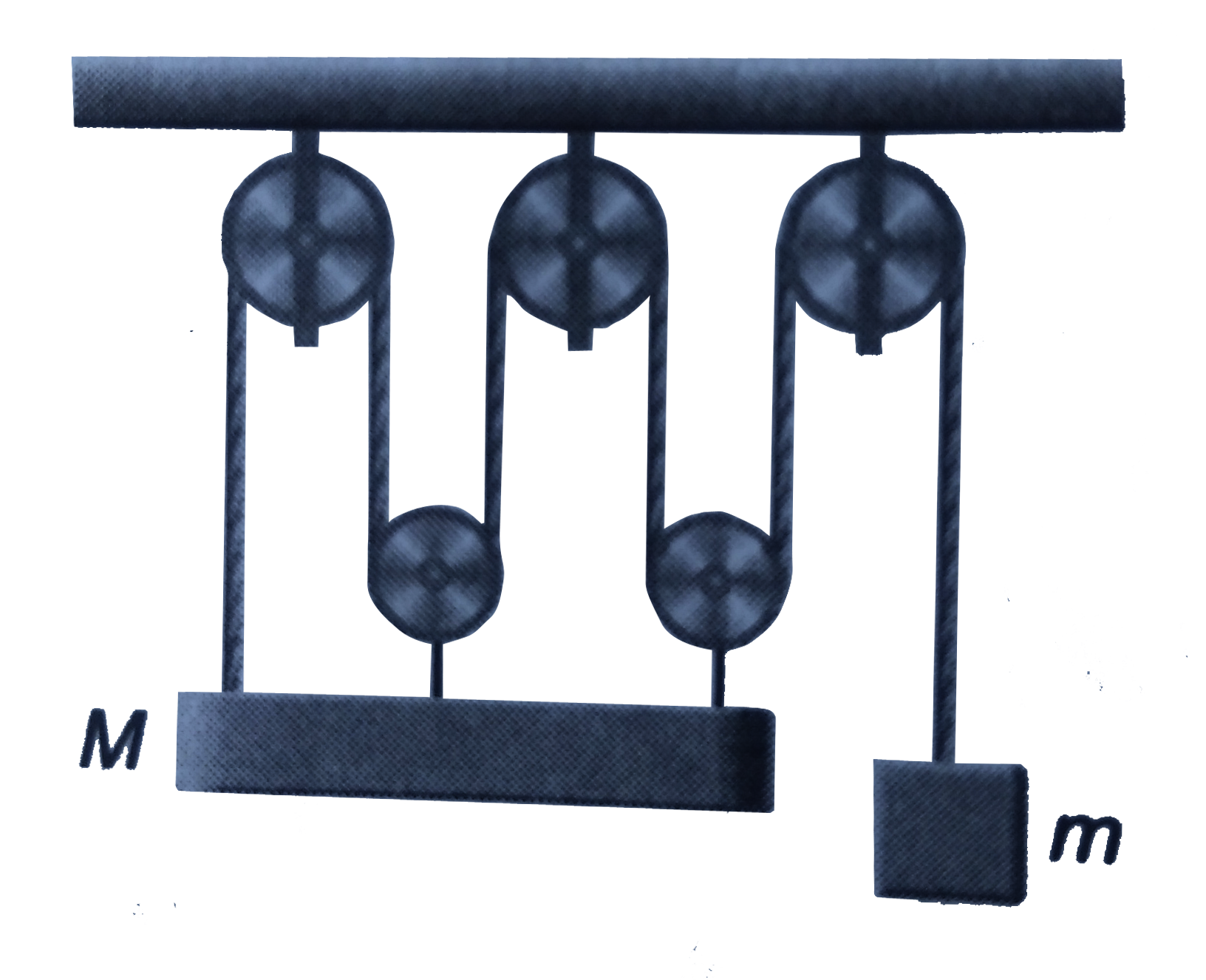Find the relation in the accelerations of the three masses shown in fig.

(a) Length of the string between A and D will remain the same.
For this (a1−a4)+(a2−a4)=0...(i)
⇒a1+2a2−2a4=0

Length of the string from E to C will remain the same.
a4+a3=0⇒a4=−a3 ...(ii)
From eq. (i) and (ii), a1+2a2+2a3=0
(b) (a1+a2)+(a1+a3)+a3=0
⇒2a1+a2+2a3=0.
Topper's Solved these Questions
- NEWTON'S LAWS OF MOTION 1Book:CENGAGE PHYSICS ENGLISHChapter:NEWTON'S LAWS OF MOTION 1Exercise:Exercise 6.4
Explore 13 Videos
- NEWTON'S LAWS OF MOTION 1Book:CENGAGE PHYSICS ENGLISHChapter:NEWTON'S LAWS OF MOTION 1Exercise:Subjective
Explore 15 Videos
- NEWTON'S LAWS OF MOTION 1Book:CENGAGE PHYSICS ENGLISHChapter:NEWTON'S LAWS OF MOTION 1Exercise:Exercise 6.2
Explore 35 Videos
- MISCELLANEOUS VOLUME 2Book:CENGAGE PHYSICS ENGLISHChapter:MISCELLANEOUS VOLUME 2Exercise:INTEGER_TYPE
Explore 10 Videos
- NEWTON'S LAWS OF MOTION 2Book:CENGAGE PHYSICS ENGLISHChapter:NEWTON'S LAWS OF MOTION 2Exercise:Integer type
Explore 1 Video
Similar Questions
The acceleration of the 10 kg mass block shown in the figure is : -

View SolutionFor the system as shown in fig. find the acceleration of C. the accelerations of A and B with respect to ground are marked.

View SolutionFind the acceleration of two masses as shown in figure . The pulley are light and frictionless and string are light and frictionless and string are light and inextensible.

View SolutionFind the acceleration of the block of mass M in the situation shown in figure. All the surfaces are frictionless.

View SolutionFind the acceleration of the block of mass M in the situation shown in figure. All the surfaces are frictionless.

View SolutionCalculate the acceleration of the masses 12 kg shown in the set up of fig. Also calculate the tension in the string connecting the 12 kg mass. The string are weightless and inextensible, the pulleys are weightless and frictionless.

View SolutionIn the arrangement of three block as shown in fig. the string is inextensible. If the direction of accelerations are as shown in the figure, then determine the constraint relation.

View Solutionfind the acceleration of the block of mass M in the situation shown in figure. All the surfaces are frictionless and the pulleys and the string are light.

View Solution(1) Find the acceleration of centre of mass of the system shown.

(ii) Find the normal reaction applied by the pulley on the thread.
View SolutionWhich of the following points is the likely position of the centre of mass of the system shown in Fig.

View Solution